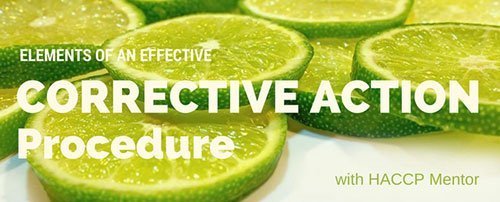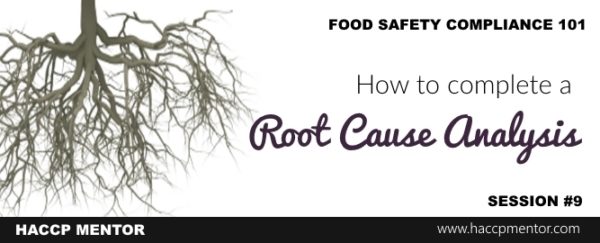Controlling non-conforming food product is essential in any food business. Lack of control can lead to customer or consumer illness and injury and also impact the viability of the business. Welcome to Week 30 of the HACCP Mentor Food Safety HACCP Challenge.
The Challenge
This week’s challenge has two parts. You are required to review your non-conforming product procedures and to then check that all non-conforming food product is clearly marked and / or stored within the non-conforming food product areas or designated quarantine areas.
Step 1: Access a copy of your non-conforming food product policy and procedures.
Step 2: Review the procedure to see if they cover the following information:
- What attributes makes a food product non-conforming?
- How will non-conforming product be identified?
- How will non-conforming product be stored?
- How will non-conforming product be disposed or destroyed?
- How is information regarding non-conforming food product captured, recorded and reported?
- Who is responsible for taking action around non-conforming food product?
Step 3: Physically inspect any non-conforming food product for adequate identification and storage.
Step 4: Take appropriate corrective action if your find inconsistences with your procedures or physical conformance.
What is a non-conforming food product?
There are many attributes that can define a non-conforming food product. Depending on the type of food business that you operate these can include:
- Product is contaminated with microbiological, chemical or physical hazards.
- Finished product weight issues (generally underweight product)
- Quality attributes do not meet the required finished product specification. For example what it looks like, how it tastes, what it smells like and how it feels.
Identifying non-conforming food product
All food product that does not meet food safety, quality or regulatory requirements should be adequately identified and stored to prevent accidental use. The most common methods that I see as a food auditor is the use of ‘hazard stickers’ and designated storage or quarantine areas. The majority of GFSI or customer standards will state requirements for dealing with non-conforming product.
Testing your system
How did you go with this challenge? Do you have adequate procedures documented? When you checked non-conforming food product on the production form – was it clearly identified and stored correctly? Let me know by leaving a comment below this post.



Terrific – check the walls & elements of the fryers if you see grease or thin film of brown to black stains you know the oil is rich is one of the following a) the oil is not pure b) the oil is made mostly of Poly unsaturated fats & saturated fats c) the oil is unstable to heat d) the oil has undergone decomposition into oxidised fats, hydrolysed fats & free fatty acids e) Trans fats, benzopyrenes & acrylamides has been formed in the oil f) all answers are correct